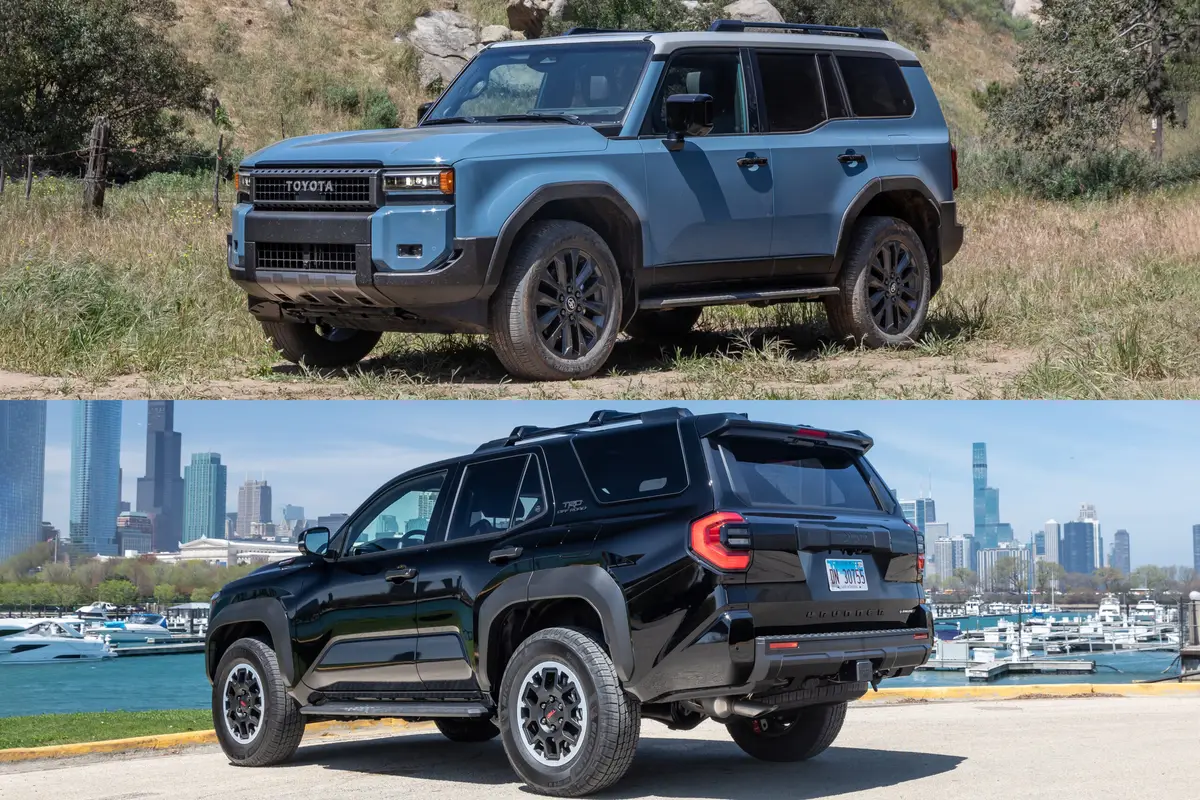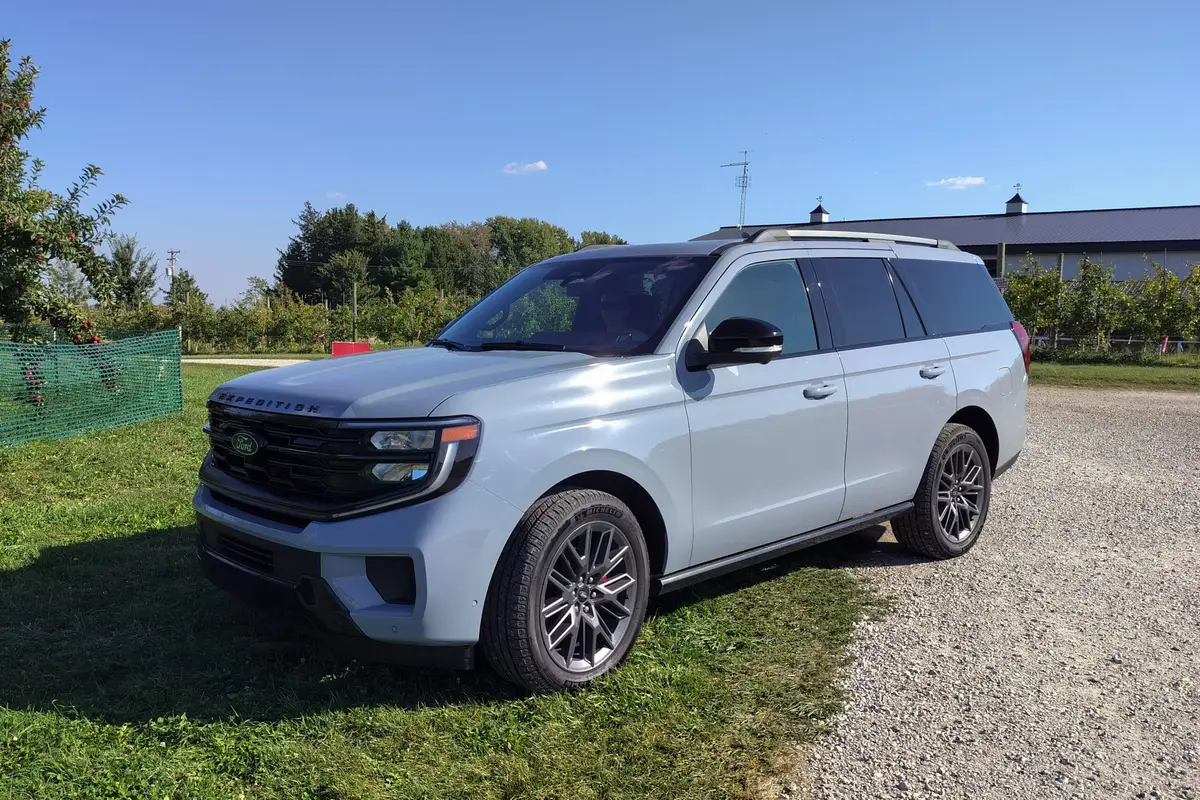2015 4x4 Challenge: Test Measurements

During the three days of our head-to-head competition, we scrutinized and took measurements of each truck in ways very different than we would have if they were average light-duty trucks. Some of this information will not be found on truckmaker specification sheets, but for our purposes the data is quite illuminating. We started with what resides beneath.
Instead of the single maximum (or minimum) ground clearance measurement that many truckmakers offer, we wanted to specifically find the low points at the front, middle and rear of each vehicle. After all, the more we know about our pickup's underbody, the better we'll be able to keep it safely away from dangerous obstacles.
Ground Clearance
For this test, we put the 2015 Ram 1500 Rebel into its Normal suspension, which gave us a baseline for the pickups. The Rebel uses an internal air compressor to inflate the airbag suspension to various, programmable ride-height settings that include Normal, Off-Road 1 and Off-Road 2 (its highest setting). For clarification, the different height settings on the Rebel really only bring up the front end of the truck because it's attached to the frame, while the rear axle does not elevate in the same way because it is attached to the wheels. Each measurement was taken at the bottom of the front and rear differentials.
We measured the Rebel's front differential height (at the Off-Road 2 setting) to be 10.3 inches, while the 2015 Toyota Tundra TRD Pro's front diff (its lowest point) offered slightly more ground clearance at 11 inches.
In the rear, regardless of the suspension setting, the Rebel measured 9.3 inches, while the Tundra's distance from the bottom of the rear differential was just 8.8 inches.
We should also note that the Tundra had more ground clearance at the center skid plate area, where it offered almost 2 inches more height. Lastly, the extra ride height provided by the adjustable suspension gives the tires more space under the fenders for moving around when flexing up and over or through nasty ruts and holes. It's not enough for a good four-wheeler to simply have good ground clearance; it also has to allow the wheels to flex and mold to the terrain, keeping a solid amount of rock-grabbing tire tread on the ground.
Crawl Ratio
As dedicated off-road machines, both of these pickups are powerful players, but the Rebel's significantly better crawl ratio — 48.7:1 versus the Tundra's 37.8:1 — didn't necessarily make it the better 4-Low crawler because of the touchy throttle response found on the Ram. Again, the crawl ratio is the first gear times the axle ratio times the low-range ratio of the transfer case. We found it much easier to modulate the Tundra when navigating tight, rock-filled trails. The Tundra also seemed to have a more sophisticated, finely tuned and accommodating traction control system that allowed us to have more fun and push it a little on sand, up dirt hills, down steep inclines, etc.
Suspension Flex
A good 4×4 can be measured by how much opposing twist a suspension can accommodate when navigating a rugged trail or a washed-out road. The Hungry Valley State Vehicle Recreation Area offers a closed-course set of tests and obstacles for anyone with a four-wheeler to try out. The one that caught our eye was a steep stair step (think of it as a 4-foot-high pyramid) that allowed us to see how far up the steps we could climb our front tire before the rear tire would lift off the ground or lose traction, simulating an extreme suspension twist.
We approached the steps in both pickups from the same angle in low range and in 1st gear. Each truck's tires were set to factory specs. We found the suggested approach angles for each truck to be pretty good, with the factory number for the Rebel designated at 25 degrees (in full Off-Road 2 mode), while the Tundra suggested 22 degrees.
We drove each truck up the stairs until the opposing rear tire lost traction, then measured the distance from the center of the rear tire to the base of the pyramid. As you might have guessed, the higher a truck climbed the obstacle, the closer the rear tires got to the base of the pyramid. The shorter the distance between a rear tire and the pyramid, the more flexible and presumably off-road capable that truck will be.
What we found was that the Tundra was able to climb the obstacle farther while keeping all its tires on ground, measuring just 123 inches from the rear wheel center to the pyramid base. The Rebel, in Off-Road 2 setting to help protect the lower air dam from scraping the steps, ended up a full step lower than the Tundra at 127.5 inches. It's worth noting that the Tundra's win is more impressive when you consider it has a wheelbase that is more than 5 inches longer than the Rebel's wheelbase.
Making Noise
Although much of our testing was about exploring which pickup is the better off-road player, we wanted to include other real-world, everyday driving tests that address livability more than just the occasional outing in the rugged backcountry. That's why we took sound measurements in each truck, using a digital sound meter at idle and at 70 mph to see which truck does a better job of maintaining a quiet cabin.
The Rebel did a much better job of keeping out unpleasant noises at idle (windows rolled up, air conditioning off, engine warmed up), providing an interior that was more than 30 percent quieter than the Tundra: 25.1 dB(A) compared to 33.2.
Interestingly, although we would have thought the Tundra's aftermarket-like dual exhaust offered a louder and more aggressive sound, the Rebel was only a little quieter than the Tundra when running at 70 mph: 61.8 dB(A) compared to 63.5.
Still, when asked, all three judges said they preferred the throaty burble of the Tundra to just about anything else on the market.
Sand Drags
While we decided not to bother with a quarter-mile drag strip for this contest, we wanted to see how these trucks accelerated against each other in a true off-road, loose-dirt situation with each relying on their traction-control systems.
We found the perfect spot to conduct our rather unscientific drag races in the form of a designated open-land vehicle area near Dumont Dunes, just an hour away from Death Valley. For those who have ever been to Dumont Dunes, it has some of the tallest sand dunes in North America located in more than 8,000 acres.
The ground is a mixture of loose sand, rocks and desert soil that the wind blows level, meaning it was not difficult to find a remote area to set up a drag strip on open sand to safely conduct side-by-side runs. Our course was well shy of a quarter-mile, but it did allow us to get up to a decent speed (50 mph or so) to judge how much launch off the line, faster or slower, one truck had compared to the other.
We made several runs in several traction modes until we were able to see a consistent difference, then we moved to the next mode, providing cool-down time when needed. We made sure not to launch our trucks in the same ruts or loosened sand areas where we had previously launched so that we could provide as much ground consistency as possible. Given the terrain and the trucks' aggressiveness tire treads, we set the tire pressures between 25 and 28 pounds per square inch. That gave us the proper cushion and traction necessary in each 4×4 to deal with the sand.
How They Ran
Our first runs were done in four-wheel-drive high range, leaving the standard traction controls settings on and essentially flat-footing the launches to let the pickups figure out how to best get the power to the wheels. Using these settings, the Tundra was the consistent winner by at least 1.5 truck lengths.
Our next runs were done in four-wheel-drive high range, but we turned off the traction controls and left throttle modulations to the drivers. During these runs, both trucks seemed to wrestle with some rear-axle wheel hop, but the Rebel had a much harder time keeping its rear end quiet. As a result, the Tundra showed itself to be the superior sand runner, consistently beating the Rebel by at least two truck lengths.
Next we put each truck in two-wheel drive and ran them with all settings in their default positions, just as you would when driving around town. Granted, we had lower tire pressures, but it surprised us how aggressive some of the settings were. In this case, the Tundra was quick to stop fuel from going to the engine as soon as it felt any rear tire spin, meaning the driver had to be progressive with the throttle to get any power to the wheels at all. The Rebel encountered a little wheel hop, but it didn't experience anywhere near the amount of computer interference that the Tundra did. In the end, the Tundra ran behind the Rebel by at least five lengths in each of these runs.
Our last runs were done in two-wheel drive with the traction control off, and here the Tundra seemed like a different truck, allowing lots of power to get to the rear wheels and even providing a good amount of wheel spin. In this mode, the Tundra's "Auto LSD" light illuminated, meaning the rear axle was better able to distribute traction from one side of the rear axle to the other, and was able to more confidently get traction to the ground. And even though the Rebel has a limited-slip differential, the occasional axle hop kept it from performing better. In the end, the Tundra consistently ran at least one truck length faster over our improvised short-course straightaway.
Final Thoughts
Knowing how much torque these two truck engines can generate when the gear multipliers are engaged, we didn't think it necessary to do any drag runs in low range seeing as how both would probably do a great job of digging four deep holes in no time, burying themselves up to their frames.
After our sandy drag races, we spent the rest of the day running up and down the sand dunes with both pickups. Both trucks had plenty of power (assuming you had the speed) to run up and down the loose terrain, but the Tundra felt a touch lighter on its feet than the Rebel did. When running in both 4-High and 4-Low, the quick throttle response feel of the Toyota allowed it to jump in and out of places that the Rebel struggled with. Both do well keeping the rpm high, but the slower responsiveness and slight hesitations in the Rebel throttle make it feel heavier and more sluggish.
Cars.com photos by Evan Sears
| | Test Measurements | | | | Results


Former L.A. Bureau Chief Brian Wong is a California native with a soft spot for convertibles and free parking.
Featured stories



